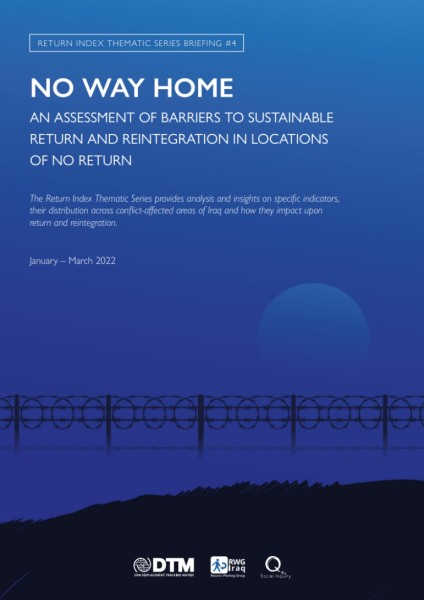No Way Home: An assessment of barriers to sustainable return and reintegration in locations of no return

IOM DTM conducts regular assessments of over 4,500 locations in which internally displaced persons (IDPs) or returnees reside across Iraq. A location is defined as an area that corresponds with either a village, for rural areas, or a neighbourhood in urban areas (i.e. the fourth official administrative division). Data are collected through IOM’s Rapid Assessment and Response Teams (RARTs), who are deployed across the country. IOM’s RARTs collect data through interviews with key informants, using a large, well-established network of over 9,500 key informants that includes community leaders, mukhtars, local authorities and security forces.
Locations of no return are those that recorded displacement during or since the 2014-2017 conflict with Islamic State of Iraq and the Levant (ISIL) but have either not recorded any returns or have subsequently recorded that all returnees have re-displaced.
Locations of no return commonly have no key informant and few or no inhabitants and are therefore difficult to identify and monitor. To address the paucity of information on the conditions in these locations, DTM began to identify locations of no return in January 2019. Since then, the assessment tool for locations of no return has been refined and expanded to better meet the information needs of programme teams. The data in this report was collected between January and March 2022. The report presents information on:
- Access to locations of no return, for IOM RARTs, other agencies, and other individuals, including residents;
- The extent of displacement and number of families residing in these location prior to 2014, if known;
- The presence of security actors, including which actors influence returns;
- Whether returns are blocked for all or for some groups and individuals;
- The prevalent security concerns and extent of residential destruction in each location; and • The reasons why returns have not occurred to date.
- This report analyses the prevalence and distribution of these factors, to provide an evidence base for strategic programming in locations of no return.

